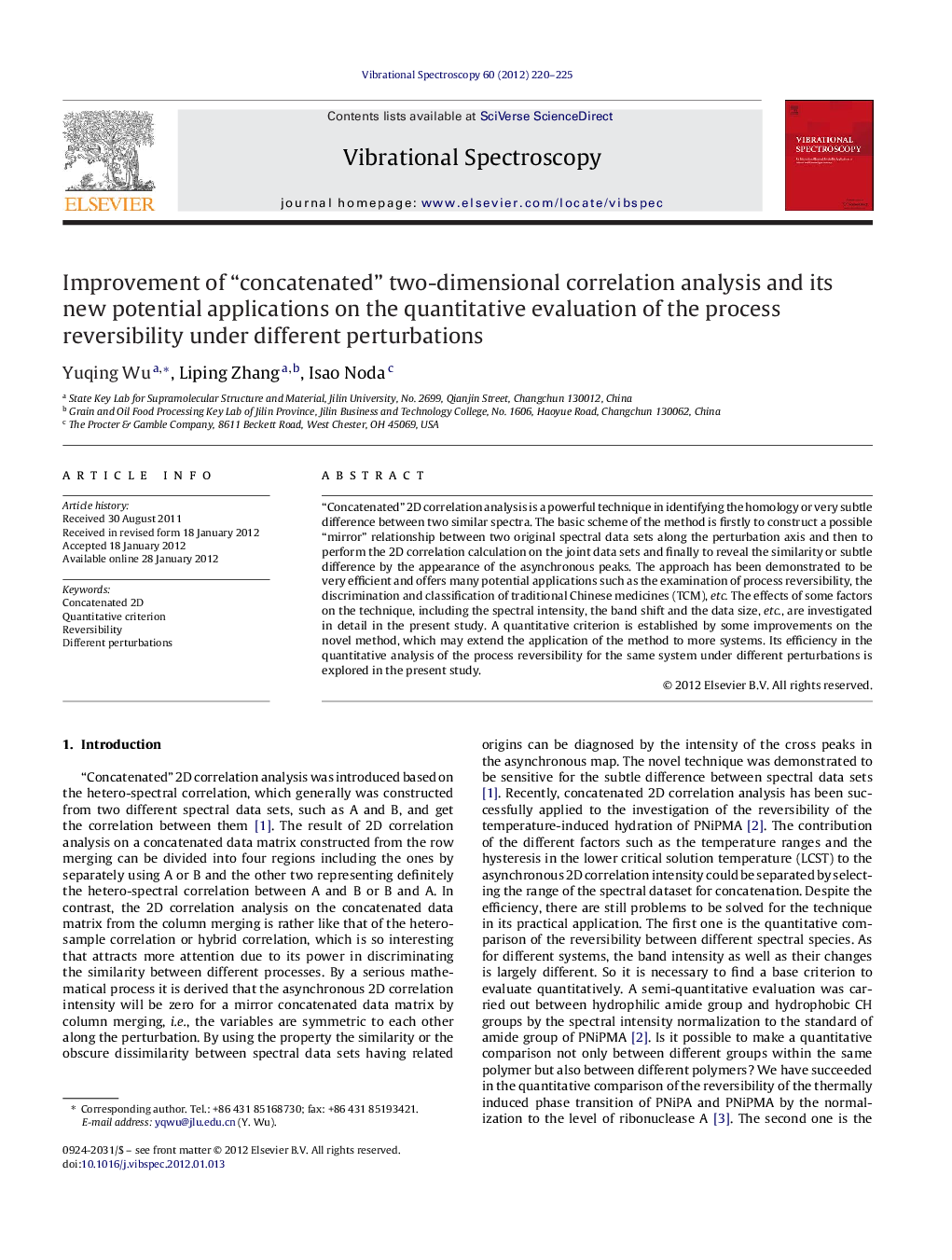| Article ID | Journal | Published Year | Pages | File Type |
|---|---|---|---|---|
| 1249635 | Vibrational Spectroscopy | 2012 | 6 Pages |
Abstract
“Concatenated” 2D correlation analysis is a powerful technique in identifying the homology or very subtle difference between two similar spectra. The basic scheme of the method is firstly to construct a possible “mirror” relationship between two original spectral data sets along the perturbation axis and then to perform the 2D correlation calculation on the joint data sets and finally to reveal the similarity or subtle difference by the appearance of the asynchronous peaks. The approach has been demonstrated to be very efficient and offers many potential applications such as the examination of process reversibility, the discrimination and classification of traditional Chinese medicines (TCM), etc. The effects of some factors on the technique, including the spectral intensity, the band shift and the data size, etc., are investigated in detail in the present study. A quantitative criterion is established by some improvements on the novel method, which may extend the application of the method to more systems. Its efficiency in the quantitative analysis of the process reversibility for the same system under different perturbations is explored in the present study.
Keywords
Related Topics
Physical Sciences and Engineering
Chemistry
Analytical Chemistry
Authors
Yuqing Wu, Liping Zhang, Isao Noda,
